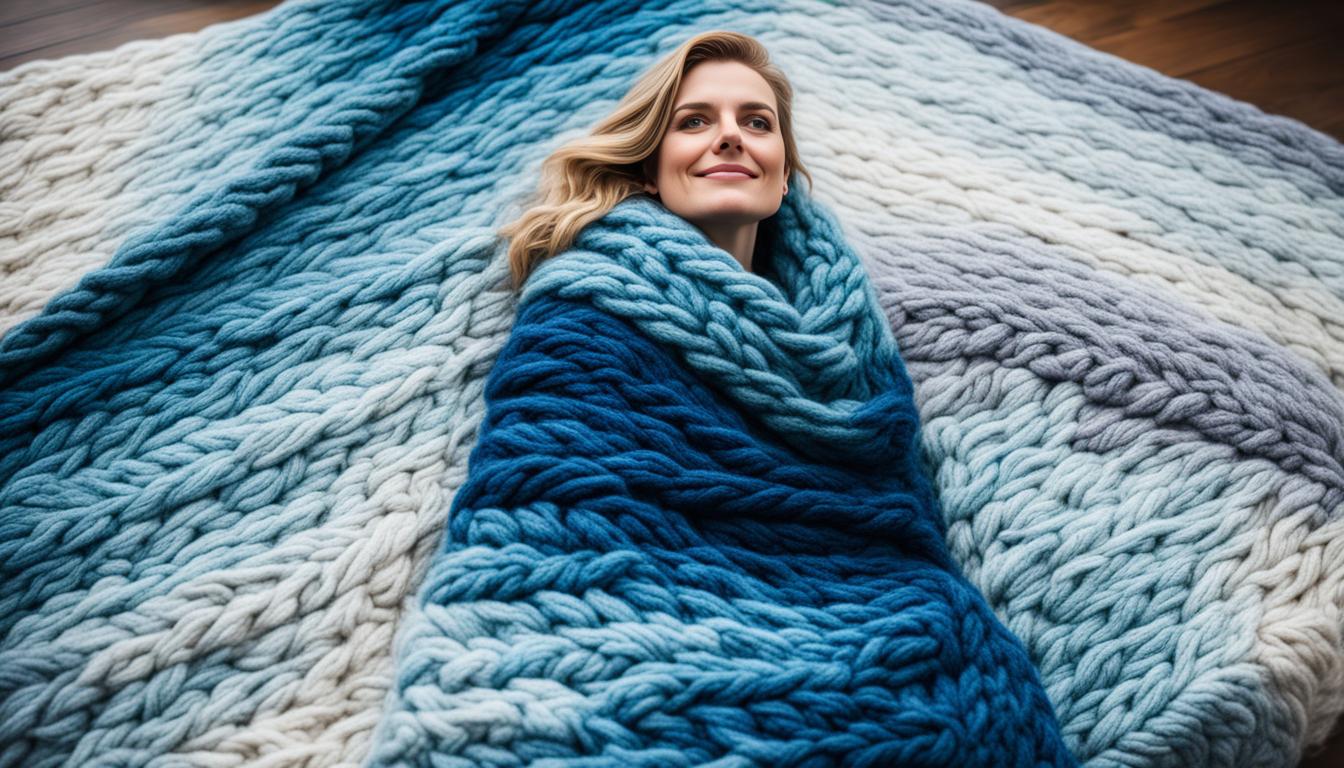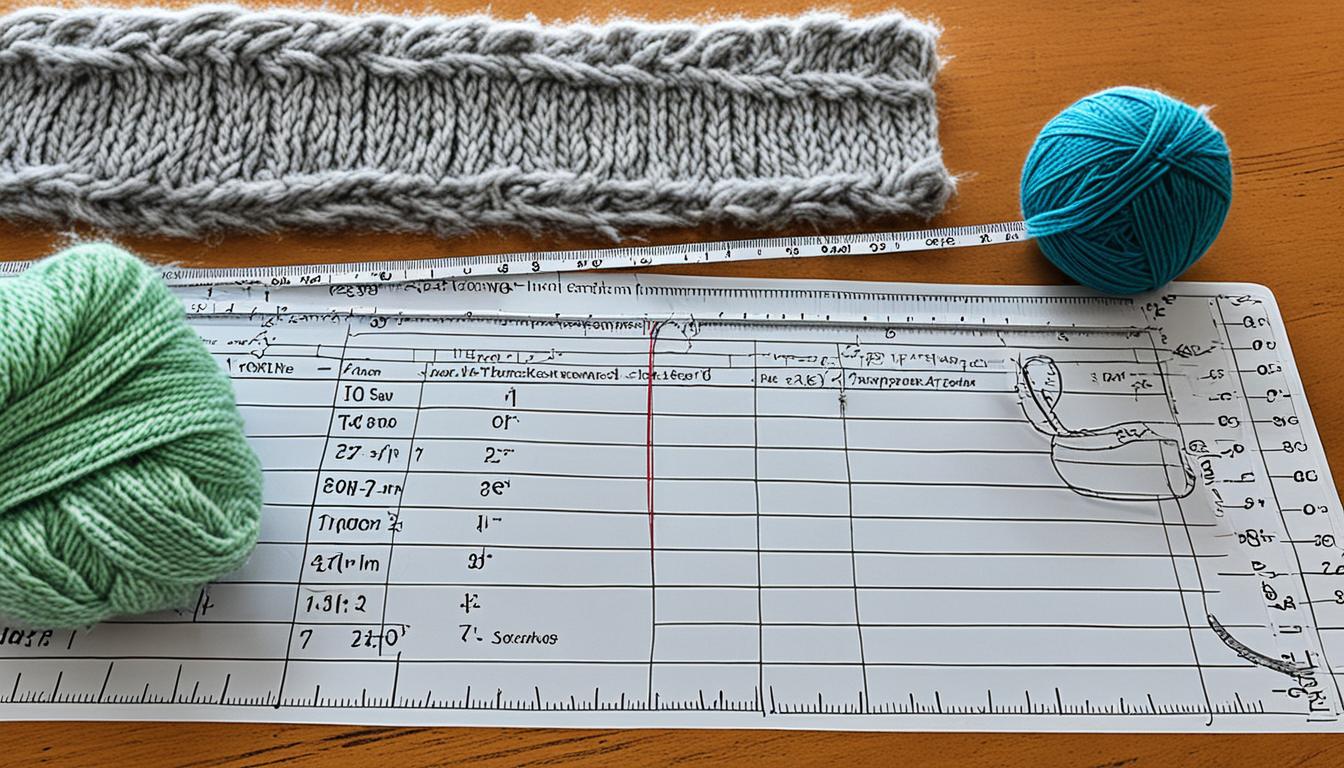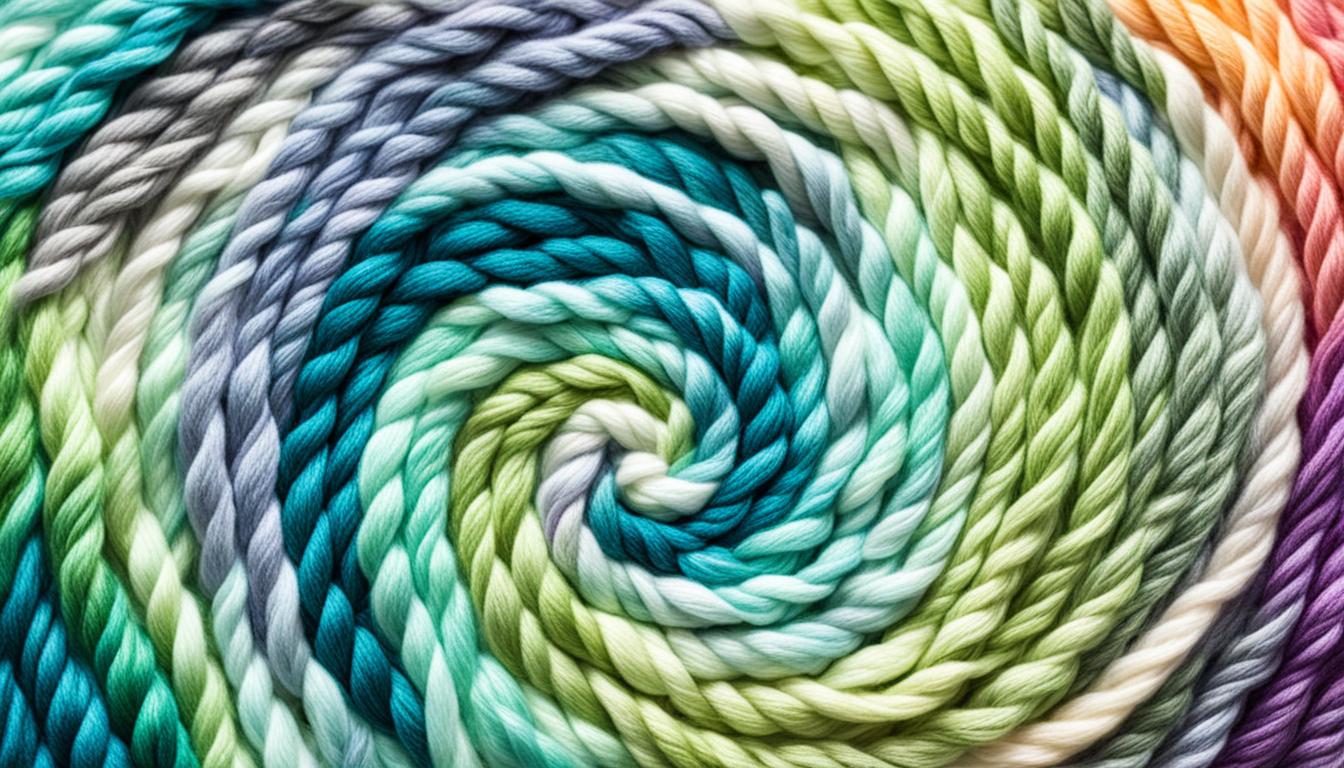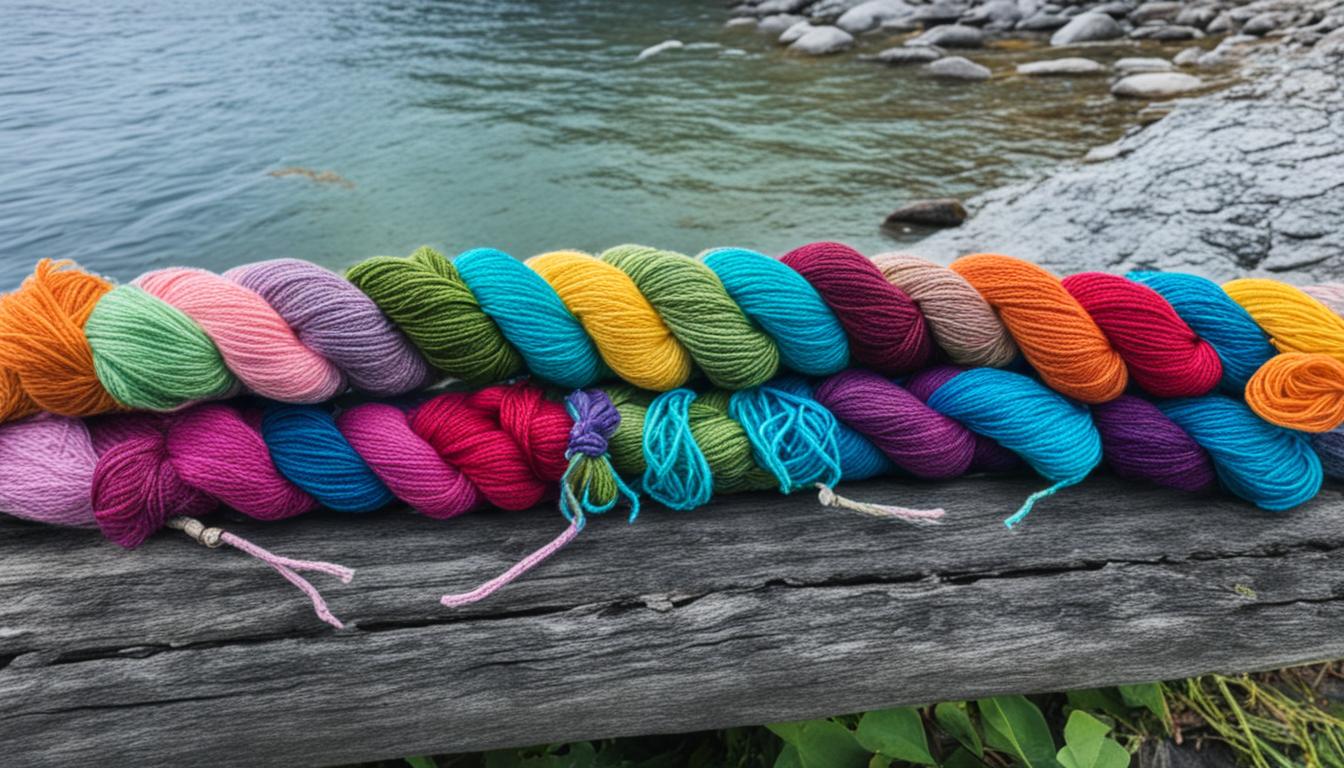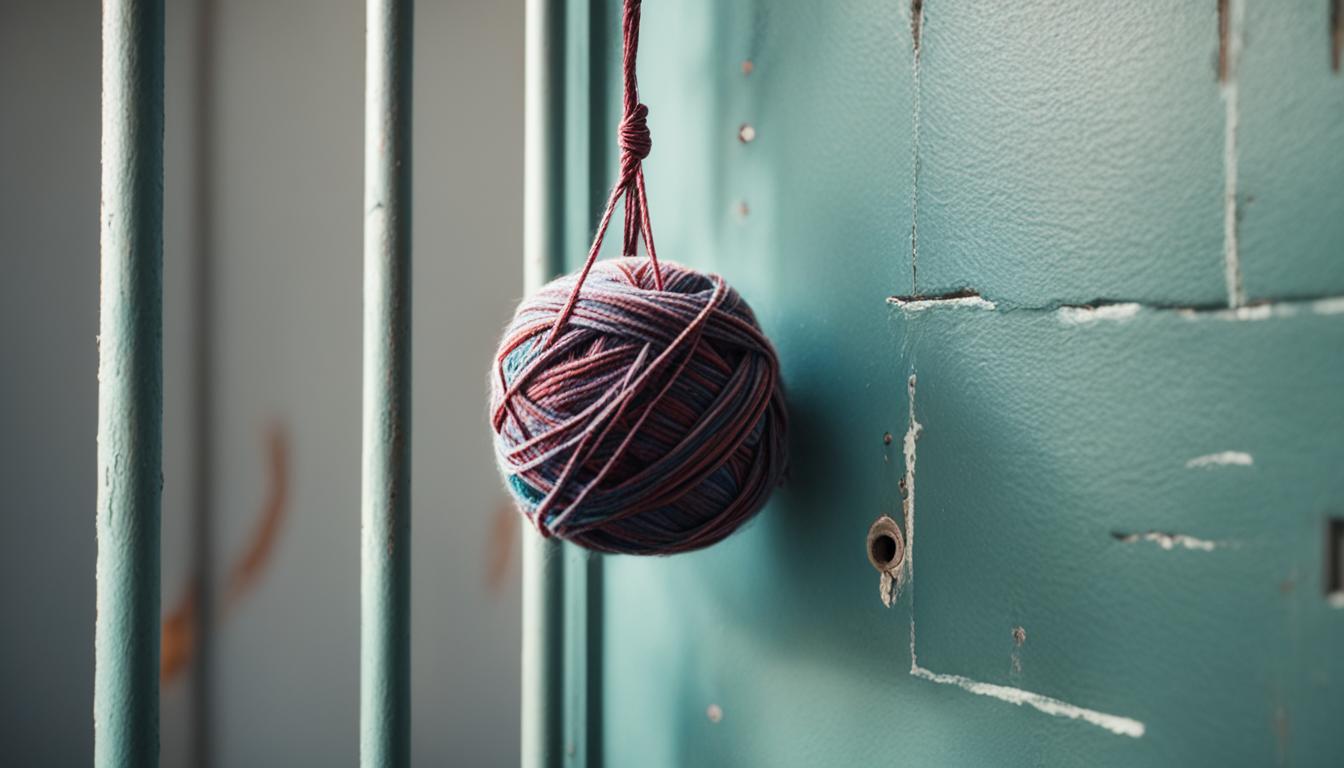Have you ever wondered if yarn can actually keep you warm? We often use yarn for crafting cozy blankets, scarves, and sweaters, but does it offer more than just comfort and style? Let’s dig deeper into the insulation properties of yarn and discover how it helps us stay warm in chilly weather.
When it comes to insulation, wool is a popular choice. But what about other types of yarn? Can they provide the same level of warmth? In this article, we’ll unravel the mystery behind yarn’s thermal properties and explore the benefits of using yarn for insulation. Whether you’re a seasoned knitter or simply curious about the secrets of warmth, this article will provide you with all the answers you need.
Key Takeaways:
- Wool is known for its insulation properties and ability to regulate temperature.
- Yarn creates tiny air pockets that reduce heat conduction and trap warm air.
- Merino wool, lambswool, and cashmere are popular types of yarn for warmth.
- Wool is not only warm but also flame resistant, durable, and sustainable.
- Yarn can keep you warm even when wet, thanks to its moisture-absorbing and air-trapping properties.
The Science behind Wool’s Insulation and Temperature Regulation
Wool is a remarkable fabric that offers both insulation and temperature regulation, making it an ideal choice for keeping you warm in any season. The science behind wool’s insulation properties lies in its unique structure. The crimped and curly fibers of wool create countless tiny air pockets within the fabric, reducing heat conduction and preventing cold air from reaching the body. This natural insulation keeps you cozy and warm in cold weather.
But wool’s benefits go beyond insulation. Its ability to regulate temperature is equally impressive. Wool has the exceptional capability to absorb moisture vapor, helping with evaporative cooling and preventing overheating. As the surrounding environment dries out, wool releases the absorbed moisture, creating a warming effect that protects against the chill. This temperature regulation feature makes wool versatile and suitable for all seasons.
So, how does wool keep you warm? The crimped structure of wool fibers creates air pockets that trap warm air close to your body, providing insulation from the cold. Additionally, wool’s moisture-absorbing nature contributes to temperature regulation, preventing overheating and keeping you comfortable. The combination of insulation and temperature regulation makes wool a superior choice for maintaining optimal warmth and comfort.
Wool’s crimped and curly structure creates countless tiny air pockets within the fabric, reducing heat conduction and trapping warm air close to the body.
With its impressive insulation and temperature regulation properties, wool offers unparalleled comfort and warmth in a wide range of applications, from cozy sweaters and blankets to high-performance outdoor gear.
Insulation through Air Pockets
The crimped and curly fibers of wool play a vital role in its insulation properties. When tightly woven or knitted, these fibers create countless tiny air pockets within the fabric. These air pockets effectively reduce heat conduction by minimizing direct contact between the body and the cold air outside. By trapping warm air close to your body, wool acts as a natural insulator, keeping you warm and protected from the elements.
Wool insulation relies on the crimped structure of its fibers, which creates countless tiny air pockets within the fabric, reducing heat conduction and trapping warm air close to the body.
Temperature Regulation through Moisture Absorption
In addition to its insulation properties, wool has the ability to regulate temperature through moisture absorption. Wool can absorb up to 30% of its weight in moisture without feeling damp, making it an excellent material for managing moisture and perspiration. When you engage in physical activity or find yourself in warmer conditions, wool absorbs the moisture vapor on your skin, providing a cooling effect through evaporative cooling.
Moreover, as the environment dries out, wool releases the absorbed moisture, generating warmth within the fabric. This moisture release creates a cozy and warming effect, protecting you from the cold and providing comfort in changing weather conditions.
Overall, the science behind wool’s insulation and temperature regulation makes it a smart and reliable choice for staying warm and comfortable year-round. Whether you’re bundling up for winter or venturing into outdoor activities in milder seasons, wool’s natural properties ensure that you’ll always be well-insulated and thermally regulated.
Types of Wool Fabric for Warmth
When it comes to staying warm in colder climates, wool fabric is a popular choice for its excellent insulation properties and natural warmth. There are several types of wool fabric that are well-known for providing warmth, breathability, and comfort.
Merino Wool
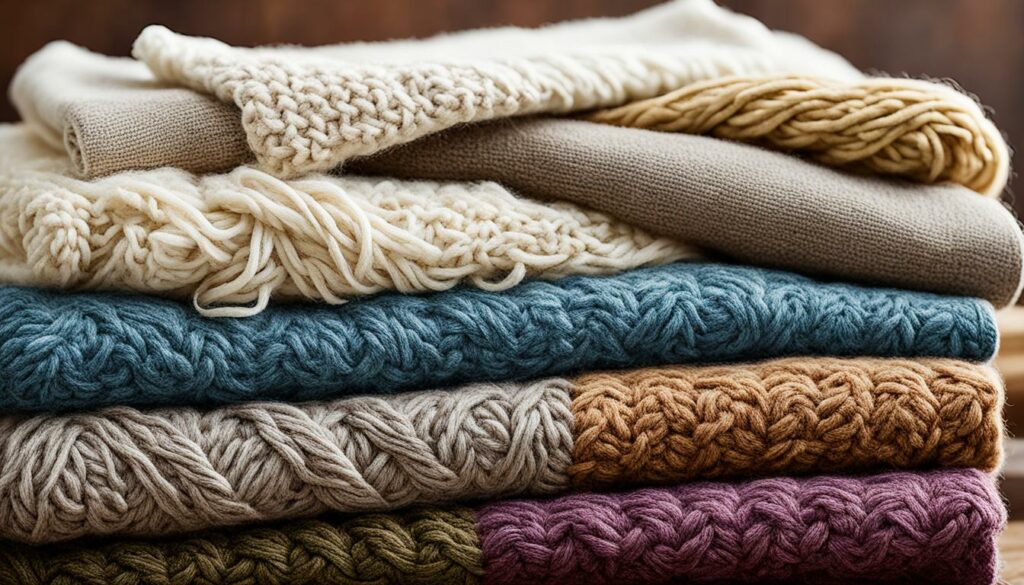
Merino wool is highly regarded for its softness and fine fibers. It is known for its exceptional insulation properties, making it an ideal choice for keeping warm. Merino wool is also moisture-wicking, meaning it can effectively draw moisture away from the body, keeping you dry and comfortable in various weather conditions.
Lambswool
Lambswool refers to the wool obtained from the first shearing of young sheep. It is lightweight, soft, and incredibly warm. Lambswool is commonly used in sweaters, scarves, and other garments because of its excellent insulation capabilities.
Cashmere
Cashmere, sourced from the soft undercoat of Cashmere goats, is renowned for its luxurious feel and exceptional warmth. The fine fibers of cashmere make it incredibly soft and comfortable to wear, making it a popular choice for cold weather clothing.
These types of wool fabric are sought after for their ability to provide warmth, breathability, and moisture-wicking properties. Whether you choose merino wool, lambswool, or cashmere, you can rely on these fabrics to keep you cozy and comfortable in colder temperatures.
Properties of Wool Material
Wool possesses several notable properties that make it an excellent material for warmth and comfort. Let’s explore the key features of wool that set it apart:
Insulation
One of the most remarkable properties of wool is its insulation capabilities. The crimped structure of wool fibers creates countless tiny air pockets that trap warm air, providing natural warmth even in cold temperatures. This insulation helps to reduce heat conduction, keeping you cozy in chilly weather. Wool’s insulation properties make it an ideal choice for clothing and textiles.
Moisture-Wicking
Another impressive property of wool is its moisture-wicking ability. Wool has the unique capacity to absorb moisture without feeling damp. This feature helps regulate body temperature by drawing moisture away from the skin, offering comfort during physical activity or in warmer weather. The moisture-wicking property of wool makes it an excellent choice for active individuals.
Durability
Wool is known for its exceptional durability. It can withstand wear and tear, making it a long-lasting material for clothing and other textile products. The strong and resilient nature of wool fibers allows them to maintain their shape and structure even with regular use. This durability ensures that wool garments remain in good condition for an extended period, providing value for your investment.
Biodegradability
When it comes to sustainability, wool shines as a biodegradable material. As a natural fiber, wool is able to decompose naturally when discarded, reducing its environmental impact. Wool’s biodegradability makes it an environmentally friendly choice compared to synthetic materials, contributing to a more sustainable and eco-conscious lifestyle.
These impressive properties of wool, including its insulation, moisture-wicking, durability, and biodegradability, make it a desirable material for warmth, comfort, and sustainability. The next section will explore why wool is considered the warmest clothing material.
Wool as the Warmest Clothing Material
When it comes to finding the warmest clothing material, high-quality wool, particularly Merino wool, stands out as a top choice. With its exceptional insulation properties and natural ability to regulate body temperature, wool provides optimal warmth and comfort in cold weather conditions.
Unlike synthetic materials, which can sometimes trap heat and cause discomfort, wool’s unique structure allows air to circulate, preventing overheating. The crimped and curly fibers of wool create countless tiny air pockets, reducing heat conduction and trapping warm air close to the body. This insulation effect keeps us comfortably warm even in the coldest temperatures.
Merino wool, known for its fine-grade fibers and softness, takes warmth to the next level. With its superior insulation capabilities, Merino wool garments provide exceptional heat retention, keeping the wearer cozy and comfortable in chilly climates.
While wool reigns supreme as the warmest clothing material, other options like down insulation and synthetic materials designed for extreme cold weather also offer substantial warmth. However, it’s important to consider that the overall warmth of clothing depends on factors such as construction, layering systems, and the specific conditions and activity level of the wearer.
When it comes to staying warm, we can rely on the natural properties of wool to keep us comfortable in the harshest winter weather. Whether you’re skiing on the slopes or taking a leisurely walk in the snow, wool’s warmth and versatility make it an excellent choice for all your cold-weather adventures.
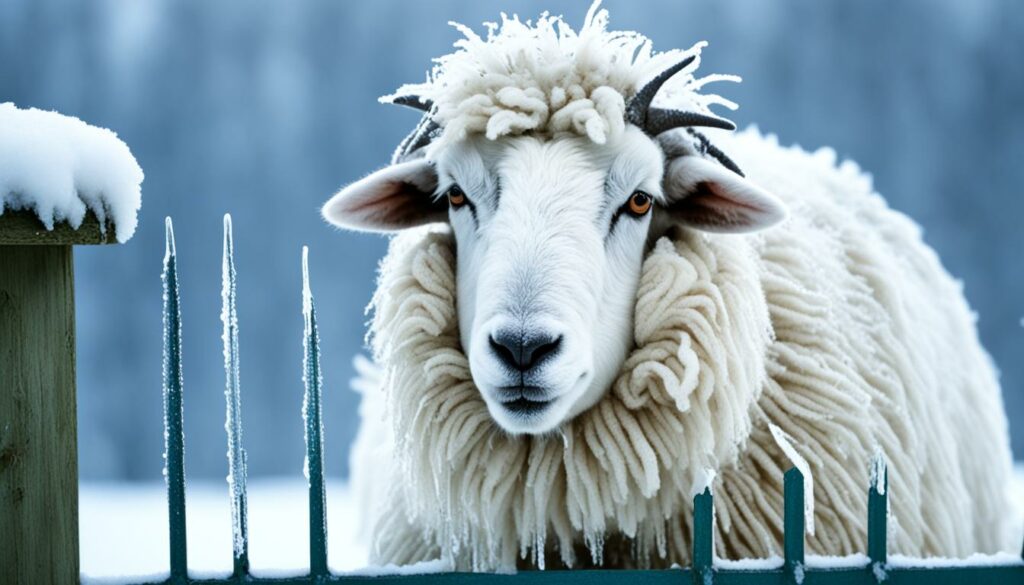
| Material | Insulation | Regulation | Comfort |
|---|---|---|---|
| Wool | Excellent | Natural | High |
| Down | Excellent | Low | High |
| Synthetic | Good | Variable | Variable |
The Magic of Wool: Staying Warm Even When Wet
Wool is truly a magical material when it comes to staying warm, even in wet conditions. Its unique properties make it an excellent choice for maintaining warmth and comfort, even when exposed to moisture.
One of the key factors that sets wool apart is its insulation ability when wet. The crimped structure of wool fibers creates countless tiny air pockets that continue to insulate even when saturated with moisture. This insulation traps warm air close to the body, providing a cozy barrier against the chill.
Additionally, wool has impressive moisture-absorbing capabilities. It can absorb up to 30% of its weight in moisture without feeling damp. This moisture-absorption property allows wool to wick moisture away from the skin, preventing the cooling effect of wetness and keeping you comfortably warm.
But wool doesn’t just stop at insulation and moisture absorption. When wool fibers absorb moisture, they generate heat within the fiber itself. This internal heat helps to maintain body temperature and keep you warm, even in damp conditions.
So, whether you’re caught in a rain shower or engaging in outdoor activities that may cause perspiration, wool’s unique properties keep you cozy and protected. Its insulation when wet, moisture absorption, and heat generation make it an exceptional choice for maintaining warmth in all kinds of weather.
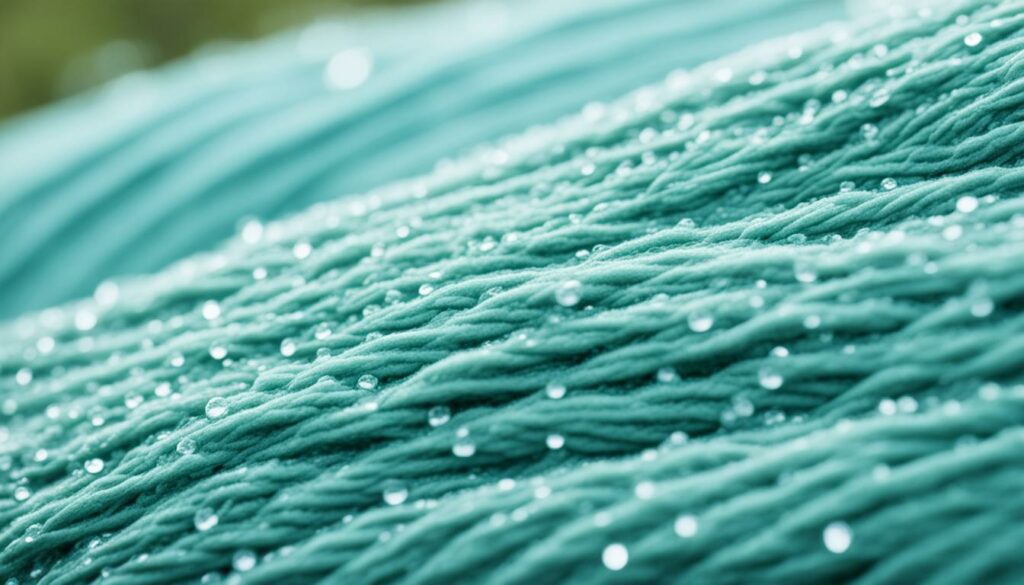
Clearance Sale: Hot Deals on Wool Insulation Products!
Before we conclude, take advantage of our clearance sale on a wide range of wool insulation products. Don’t miss out on the opportunity to experience the magic of wool and enjoy its warmth even in wet conditions. Stock up on high-quality wool garments and stay cozy throughout the year.
Shop now and discover the incredible warmth and comfort of wool insulation, whether you’re exploring the great outdoors or simply snuggling up indoors.
| Product | Description | Price |
|---|---|---|
| Merino Wool Sweater | Made from fine-grade merino wool for optimal warmth and softness. | $79.99 |
| Wool Socks | Durable and moisture-wicking socks, perfect for keeping your feet warm and dry. | $14.99 |
| Wool Blanket | Cozy and versatile, this wool blanket provides exceptional warmth and comfort. | $129.99 |
| Wool Insulated Jacket | A stylish jacket designed with wool insulation to keep you warm in any weather. | $169.99 |
The Versatility and Benefits of Wool
Wool offers more than just insulation and moisture regulation. It is a natural fiber with a multitude of benefits that make it a preferred choice for a variety of applications.
Wool is naturally flame-resistant, providing a safe alternative to synthetic materials. Its inherent flame resistance makes it an ideal choice for home furnishings and bedding, ensuring greater peace of mind for homeowners.
One of the remarkable qualities of wool is its durability. Despite repeated use, wool retains its shape and appearance, making it a long-lasting option for clothing, blankets, and upholstery. Its resilience and ability to withstand wear and tear contribute to its popularity as a material that stands the test of time.
Additionally, wool’s resistance to dirt, stains, and odors makes it practical and low-maintenance. The fibers have a natural resistance to staining, allowing for easy cleaning and maintaining a fresh appearance even with regular use.
When it comes to sustainability, wool shines as a renewable and biodegradable fabric. Unlike synthetic alternatives, wool is a natural, sustainable resource that is produced annually by sheep. It breaks down naturally over time, contributing to a healthier environment and reducing waste.
Overall, the versatility of wool, combined with its flame resistance, durability, stain resistance, and sustainability, makes it an exceptional choice for various applications ranging from clothing to home furnishings.
Benefits of Wool:
- Flame resistance: Wool is naturally flame-resistant, providing safety for home furnishings.
- Durability: Wool retains its shape and appearance even with repeated use, making it a long-lasting option.
- Stain resistance: Wool resists dirt, stains, and odors, staying clean and fresh with ease.
- Sustainability: Wool is a renewable and biodegradable fabric, contributing to a healthier environment.
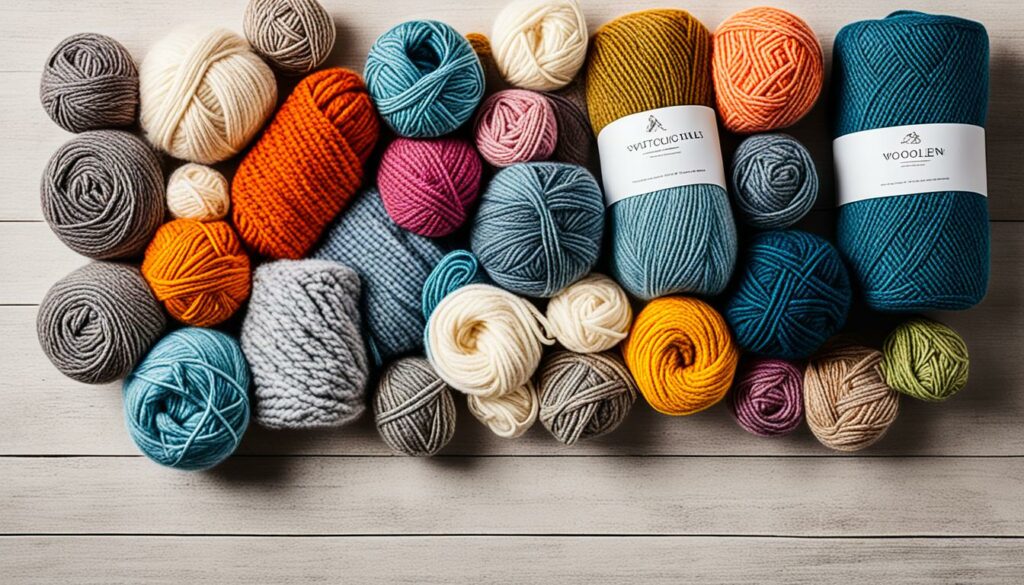
| Property | Benefits |
|---|---|
| Flame Resistance | Provides safety in home furnishings |
| Durability | Retains shape and appearance over time |
| Stain Resistance | Easily cleaned and maintained |
| Sustainability | Renewable and biodegradable |
The Science Behind Wool’s Resilience and Wrinkle Resistance
Wool exhibits impressive resilience due to its remarkable elasticity. Even after being bent thousands of times, wool fibers have the ability to recover their original shape. This exceptional resilience makes wool an excellent choice for clothing that needs to maintain its shape and structure over time. Whether it’s a tailored suit or a cozy sweater, wool’s inherent elasticity ensures that the garment retains its form, even with frequent wear and stretching.
Furthermore, wool possesses outstanding wrinkle resistance. This means that garments made from wool fibers are less likely to develop unsightly creases and folds, even after extended periods of sitting or storage. The natural crimp and elasticity of wool help to smooth out any wrinkles that might form, keeping the fabric looking smooth and polished. This property not only saves time on ironing and steaming but also ensures that your clothes maintain a high-quality appearance for longer.
“The elasticity of wool fibers allows them to recover their shape, making wool a durable choice for clothing.”
When it comes to apparel, resilience and wrinkle resistance are crucial factors. Wool stands at the forefront, offering long-lasting garments that resist deformation and maintain a well-groomed appearance, even with everyday use. Whether you’re dressing for a business meeting or a casual outing, clothing made from wool ensures that you’re both comfortable and stylish.
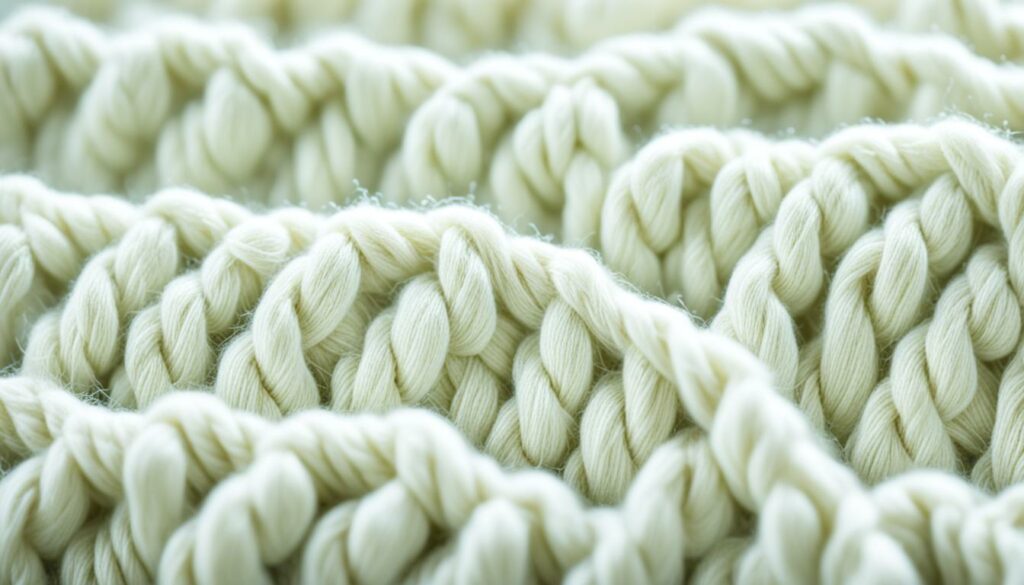
Comparing Wool’s Resilience and Wrinkle Resistance
| Material | Resilience | Wrinkle Resistance |
|---|---|---|
| Wool | High | High |
| Cotton | Low | Medium |
| Synthetic (Polyester) | Medium | High |
In comparison to cotton and synthetic materials like polyester, wool surpasses both in terms of resilience and wrinkle resistance. While cotton is known to lose its shape and wrinkle easily, synthetic fabrics often lack the natural elasticity that wool possesses. By choosing wool garments, you can enjoy the benefits of a fabric that remains resilient over time and maintains a polished and wrinkle-free appearance.
Wool’s Natural Beauty and Color Variety
When it comes to wool, its natural beauty shines through, adding an elegant touch to any outfit. The unique texture and structure of wool fibers create a subtle lustre and sheen that enhances the overall appeal of wool garments. Whether it’s a cozy sweater or a stylish scarf, wool’s natural beauty elevates the aesthetic of any piece.
The natural lustre of wool adds an elegant touch to any outfit.
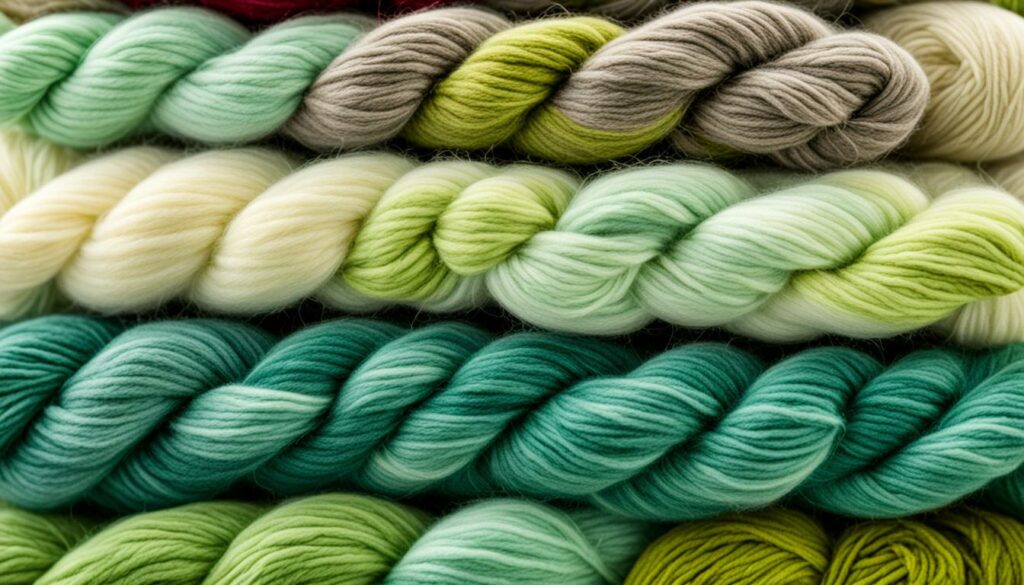
What’s even more exciting is the incredible range of colors that wool can offer. While we often associate wool with traditional white or cream hues, sheep’s wool comes in a stunning array of natural colors. From rich browns and earthy tones to vibrant reds and deep blues, the natural color variety of wool allows knitters and designers to create beautiful and unique pieces without the need for artificial dyes.
The natural color variety of wool offers endless possibilities for creating beautiful, earthy pieces.
Wool’s ability to take dye exceptionally well opens up a world of vibrant and long-lasting colors. Whether it’s a bold statement piece or a delicate pastel garment, wool absorbs dye deeply, resulting in colors that remain vibrant and true over time. This dye retention adds depth and character to wool garments, making them stand out in any wardrobe.
Combining wool’s natural beauty, color variety, and dyeability creates a truly versatile fabric that can be tailored to any style or taste. From timeless classics to unique and contemporary designs, wool’s aesthetic possibilities are endless.
Wool Natural Colors
| Natural Wool Colors | Description |
|---|---|
| Brown | Rich and earthy, ranging from light tan to deep chocolate |
| Grey | Various shades of grey, from light silver to dark charcoal |
| Black | Deep black wool, classic and elegant |
| Red | Warm and vibrant shades of red, from fiery scarlet to deep burgundy |
| Blue | Cool and calming shades of blue, from sky blue to navy |
| Green | Natural and earthy greens, from mossy hues to deep forest shades |
As you can see, wool’s natural beauty and color variety make it a fantastic choice for creating stunning, eye-catching pieces. Whether you prefer the subtle elegance of natural hues or the bold vibrancy of dyed wool, this versatile fabric offers endless possibilities to unleash your creativity and style.
Wool’s Antibacterial and Stain-Resistant Properties
When it comes to clothing choices, we all want garments that not only look good but also offer practicality and cleanliness. Wool, with its unique properties, checks all the right boxes. The dry surface of wool, coupled with the presence of lanolin, creates an antibacterial environment that resists mold, mildew, and odor-causing bacteria. This natural antibacterial property ensures that wool garments remain fresh and odor-free for extended periods.
But that’s not all. Wool is also naturally stain-resistant, thanks to the lanolin content. Lanolin acts as a protective barrier, repelling water and preventing stains from permeating the fibers. This makes wool an ideal choice for both fashion-forward individuals and those who prioritize practicality in their clothing choices.
Whether you’re wearing a wool sweater on a rainy day or tackling outdoor activities, you can trust that your wool garment will stay clean and fresh. Say goodbye to worries about persistent odors or difficult-to-remove stains. Wool has got you covered.
“Wool’s antibacterial and stain-resistant properties make it a practical and reliable choice for both fashion-forward and practical clothing.”
Comparison of Antibacterial and Stain-Resistant Fabrics
| Fabric | Antibacterial Properties | Stain-Resistance |
|---|---|---|
| Wool | ✓ | ✓ |
| Cotton | ✗ | ✗ |
| Polyester | ✗ | ✗ |
| Silk | ✗ | ✗ |
Note: The table above compares the antibacterial and stain-resistant properties of different fabrics. Wool stands out for its natural antibacterial and stain-repellent qualities, making it a superior choice in terms of cleanliness and practicality.
With wool, you can enjoy the benefits of a fabric that not only keeps you warm and comfortable but also maintains its cleanliness and freshness. It’s the perfect combination of style and practicality.
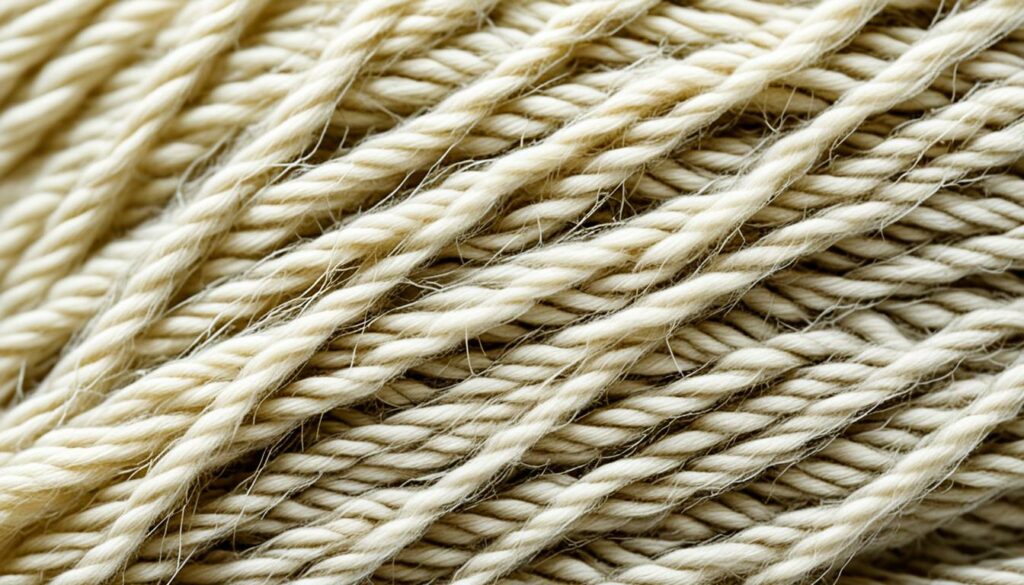
Wool as a Sustainable and Sun-Safe Choice
When it comes to sustainability, wool is a standout fabric. Its biodegradable and renewable nature makes it an eco-friendly option that significantly reduces environmental impact. As sheep produce wool annually, the discarded wool garments naturally decompose, eliminating the need for long-term waste management. This focus on wool sustainability aligns with our commitment to preserving the planet for future generations.
But wool’s benefits extend beyond its ecological footprint. Did you know that it also offers some protection against harmful UV rays? In fact, wool surpasses the average cotton shirt in UV protection, making it a reliable choice for sun safety. Whether you’re enjoying outdoor activities or simply strolling under the sun, clothing made from wool provides an added layer of defense against the sun’s harmful rays.
When you choose wool, you’re not just selecting a warm and versatile fabric. You’re also making a conscious choice to support sustainable practices and prioritize your health. Discover the wonders of wool for yourself and experience the combination of comfort, style, and sun-safe protection.

| Benefits of Wool as a Sun-Safe Choice | Wool UV Protection |
|---|---|
| Provides a natural defense against harmful UV rays | Surpasses the average cotton shirt in UV protection |
| Offers peace of mind during outdoor activities | Helps prevent sunburns and sun damage |
| Designed for sun safety without compromising comfort | Provides a cooling effect and moisture management |
| Enhances sun protection in a variety of wool garments | From hats and scarves to jackets and dresses |
Conclusion
In summary, wool is a warm and versatile fabric with exceptional properties. Its insulation capabilities, moisture-wicking ability, and durability make it an excellent choice for staying cozy in cold weather. Wool’s unique structure allows it to regulate temperature and manage moisture, providing comfort in a wide range of conditions.
In addition to its functional benefits, wool also offers aesthetic appeal. Its natural resilience and wrinkle resistance help garments maintain their shape and look polished even with extended wear. The variety of colors available in wool adds to its charm and allows for creative expression in fashion.
Furthermore, wool is a sustainable and safe choice. Its biodegradability and renewability make it an environmentally friendly option, while its antibacterial properties and stain resistance enhance its practicality. With all these remarkable qualities, wool remains a timeless fabric for warmth, comfort, and style in a variety of clothing and textiles.
